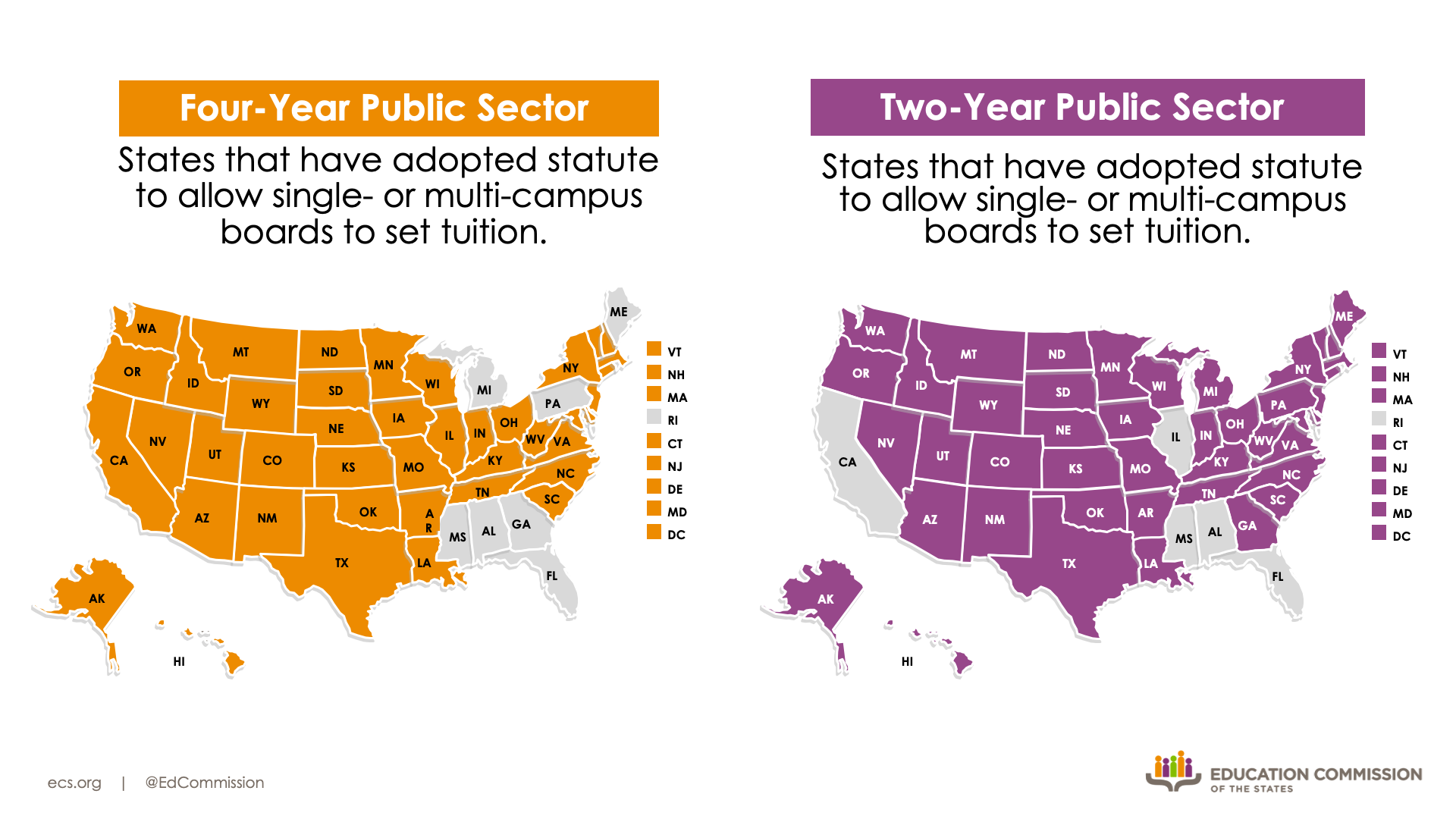Increasing prices for postsecondary education concern students, parents, educators and policymakers alike. But who has the authority to set those prices? This 50-State Comparison details the highest level of policy, by state, that addresses the authority to set tuition for the four-year and two-year public sectors. The maps below illustrate that in the majority of states, a law grants the authority to set tuition prices to single- or multi-campus boards. In other states, the topic may be addressed in the state constitution, or not at all.

Beyond granting the authority to set tuition prices, some states have adopted policies that freeze or cap tuition growth. For the first time, this 50-State Comparison also details which state legislatures have adopted such policies. Importantly, this resource only captures state policies that impose a freeze or cap on tuition prices — not those systems or individual institutions that have initiated their own freeze or cap policies.
This 50-State Comparison builds on two previous data collections completed by Education Commission of the States in 2012 and 2017. A full longitudinal dataset can be downloaded here.
50-State Comparisons
- What is the highest level of policy where tuition-setting authority is granted for four-year public institutions?
- What is the highest level of policy where tuition-setting authority is granted for two-year public institutions?
- What is the highest level of policy where the tuition rate is set for four-year public institutions?
- What is the highest level of policy where the tuition rate is set for two-year public institutions?
- Does a state law, rule or regulation require a tuition cap or freeze for four-year public institutions?
- Does a state law, rule or regulation require a tuition cap or freeze for two-year public institutions?
Key Takeaways
- Forty-three states plus the District of Columbia have adopted a state statute that outlines tuition-setting authority for the four-year public sector; 46 states plus the District of Columbia have done so for the two-year public sector.
- In 49 states and the District of Columbia, the authority to set tuition rates in the four-year public sector rests with single- or multi-campus boards.
- Eleven states have adopted state policies to cap or freeze tuition growth in the four-year public sector.
- Ten states have adopted state policies to cap or freeze tuition growth in the two-year public sector.


